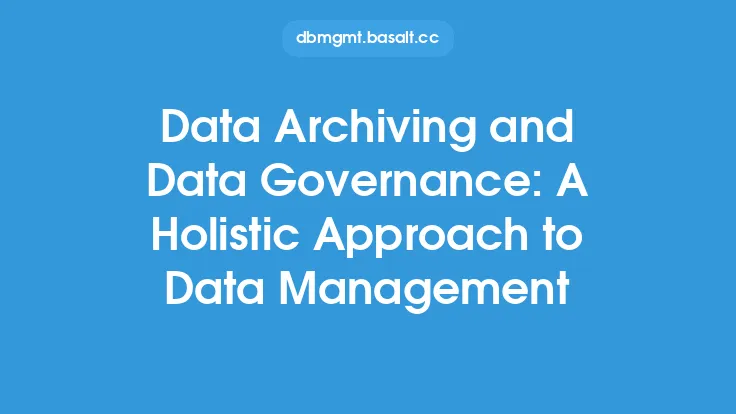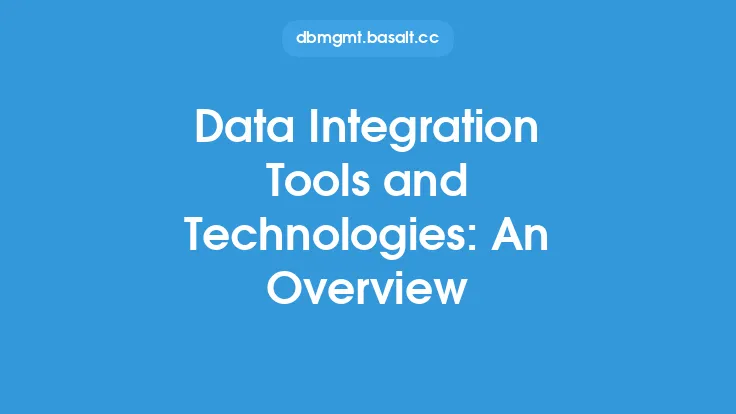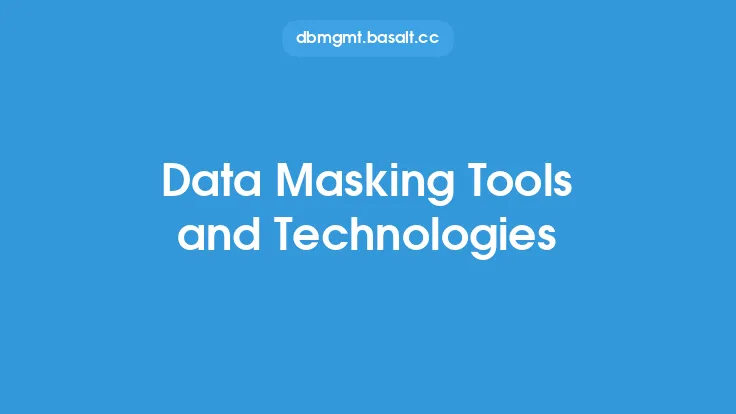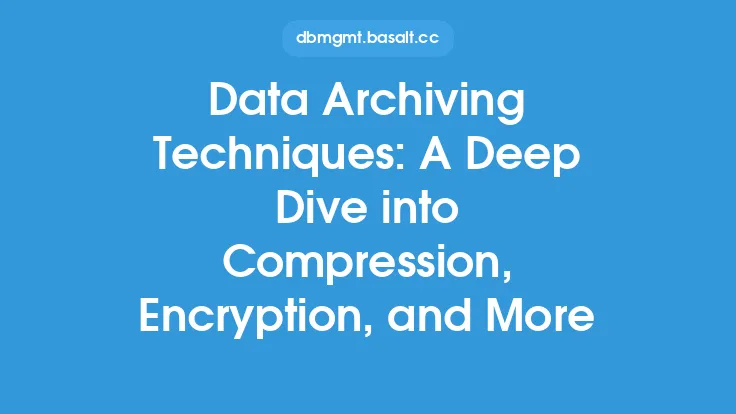When it comes to evaluating data archiving tools and technologies, there are several key considerations and features to keep in mind. Data archiving is a critical process that involves storing and managing large amounts of data in a way that ensures its integrity, accessibility, and security. With the exponential growth of data in today's digital age, organizations are faced with the challenge of managing and storing vast amounts of data while ensuring compliance with regulatory requirements.
Introduction to Data Archiving Tools and Technologies
Data archiving tools and technologies are designed to help organizations manage and store their data in a way that is efficient, secure, and scalable. These tools and technologies can range from simple data compression and encryption software to complex data archiving platforms that provide advanced features such as data deduplication, data tiering, and data analytics. When evaluating data archiving tools and technologies, it's essential to consider the specific needs and requirements of the organization, including the type and amount of data to be archived, the level of security and compliance required, and the scalability and performance needs of the organization.
Key Features to Consider
When evaluating data archiving tools and technologies, there are several key features to consider. These include:
- Data compression and encryption: The ability to compress and encrypt data to reduce storage costs and ensure data security.
- Data deduplication: The ability to eliminate duplicate copies of data to reduce storage costs and improve data efficiency.
- Data tiering: The ability to store data on different storage tiers based on its importance and frequency of access.
- Data analytics: The ability to analyze and report on archived data to provide insights and trends.
- Scalability and performance: The ability of the data archiving tool or technology to handle large amounts of data and scale to meet the needs of the organization.
- Security and compliance: The ability of the data archiving tool or technology to meet regulatory requirements and ensure data security.
Data Archiving Tool and Technology Options
There are several data archiving tool and technology options available, including:
- On-premises data archiving solutions: These solutions are installed and managed on-premises, providing organizations with full control over their data archiving environment.
- Cloud-based data archiving solutions: These solutions are hosted in the cloud, providing organizations with a scalable and flexible data archiving environment.
- Hybrid data archiving solutions: These solutions combine on-premises and cloud-based data archiving, providing organizations with a flexible and scalable data archiving environment.
- Open-source data archiving solutions: These solutions are free and open-source, providing organizations with a cost-effective data archiving option.
- Commercial data archiving solutions: These solutions are proprietary and commercial, providing organizations with a feature-rich and supported data archiving option.
Evaluating Data Archiving Tools and Technologies
When evaluating data archiving tools and technologies, there are several factors to consider. These include:
- Total cost of ownership: The total cost of owning and operating the data archiving tool or technology, including hardware, software, and maintenance costs.
- Return on investment: The return on investment of the data archiving tool or technology, including the cost savings and benefits of implementing the solution.
- Scalability and performance: The ability of the data archiving tool or technology to handle large amounts of data and scale to meet the needs of the organization.
- Security and compliance: The ability of the data archiving tool or technology to meet regulatory requirements and ensure data security.
- Vendor support and maintenance: The level of support and maintenance provided by the vendor, including documentation, training, and technical support.
Best Practices for Evaluating Data Archiving Tools and Technologies
When evaluating data archiving tools and technologies, there are several best practices to follow. These include:
- Define requirements and needs: Clearly define the requirements and needs of the organization, including the type and amount of data to be archived, the level of security and compliance required, and the scalability and performance needs of the organization.
- Research and evaluate options: Research and evaluate different data archiving tool and technology options, including on-premises, cloud-based, hybrid, open-source, and commercial solutions.
- Conduct a proof of concept: Conduct a proof of concept to test and evaluate the data archiving tool or technology in a real-world environment.
- Evaluate total cost of ownership: Evaluate the total cost of ownership of the data archiving tool or technology, including hardware, software, and maintenance costs.
- Consider vendor support and maintenance: Consider the level of support and maintenance provided by the vendor, including documentation, training, and technical support.
Conclusion
Evaluating data archiving tools and technologies is a critical process that requires careful consideration of several key factors, including data compression and encryption, data deduplication, data tiering, data analytics, scalability and performance, security and compliance, and total cost of ownership. By following best practices and considering the specific needs and requirements of the organization, organizations can select a data archiving tool or technology that meets their needs and provides a strong return on investment. Whether on-premises, cloud-based, hybrid, open-source, or commercial, the right data archiving tool or technology can help organizations manage and store their data in a way that is efficient, secure, and scalable.





